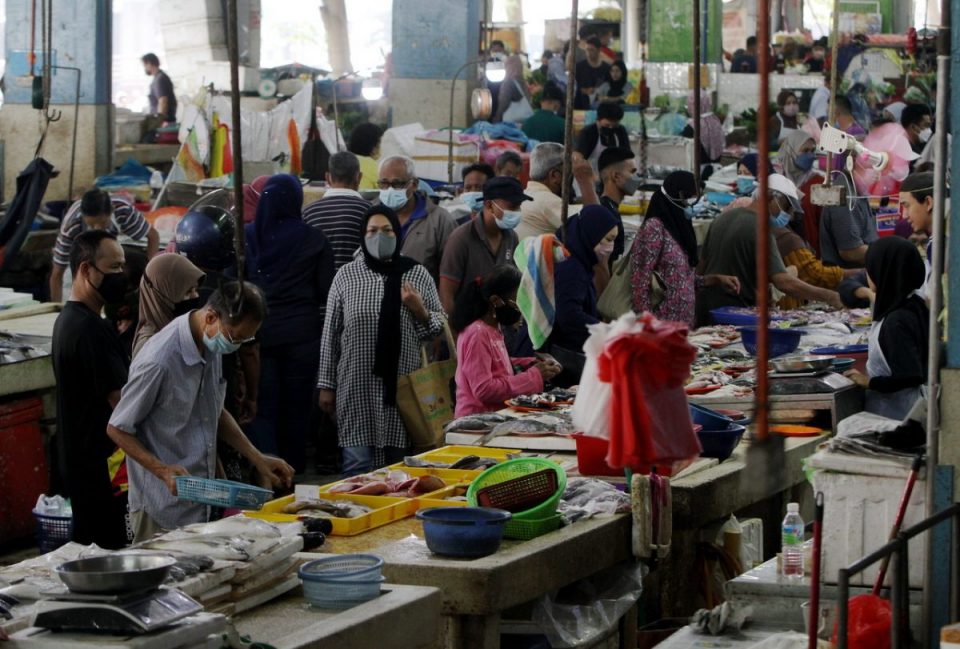KUALA LUMPUR, July 14 — The prevailing rise in food prices or food inflation, as well as supply chain issues, may disrupt access to balanced diets, according to experts who fear that this may have repercussions on people’s health.
The B40 group, who are most impacted by food inflation and forced to tighten their belts, may be compelled to make unhealthy food choices and the experts fear that this may expose their children, in particular, to the risk of developing conditions such as obesity and diabetes.
There is already existing data pointing to the rather high prevalence of obesity among children from B40 households.
According to the National Health and Morbidity Survey (NHMS) 2019, the obesity and overweight prevalence rates among children from B40 families stood at 15.6 per cent and 15.4 per cent respectively. In comparison, the obesity and overweight prevalence rates among urban children stood at 15.3 per cent and 15.4 per cent respectively.
A person is considered obese if their body mass index (BMI) exceeds 30, and overweight if their BMI ranges between 25 and 29.9. The BMI is calculated by dividing the person’s weight in kilogrammes by their height in metres squared.
Food insecurity
Prof Dr Ruzita Abd Talib, a lecturer in the Nutritional Sciences Programme at the Centre for Community Health Studies, Universiti Kebangsaan Malaysia, said in the past, obesity was linked to high-income families who lived in cities and were exposed to an environment that contributed to the intake of high-calorie food.
However, the situation has now changed and even those living in rural areas and B40 families are facing obesity issues.
“The prevalence of obesity is also high in states with high levels of urbanisation such as Putrajaya due to supply guarantee factors in terms of food quality and quantity as well as environmental factors,” she told Bernama.
She said obesity, which normally occurs when there is an imbalance in energy intake and expenditure, can also be caused by food insecurity when the lower-income groups choose to eat energy-dense food with high fat and sugar content because these are not only easier to obtain but are also cheaper and satiate their hunger faster.
Food insecurity refers to disruptions in a person’s food intake or eating pattern due to a lack of money or access or other barriers to obtaining food packed with all the required nutrients. People experiencing food insecurity are more likely to choose less nutritious food items due to cost, availability and convenience factors.
“Whether they live in cities or rural areas, parents in the B40 group are bound to focus on their survival rather than the nutritional quality of the food they eat. Their main source of carbohydrates is rice while they get their protein from chicken.
“Consuming vegetables and fruits, the prices of which have gone up, is not a priority for them,” Ruzita said.
This was reflected in a 2015 study in Malaysia which found a very low intake of fruits and vegetables among children aged between four and six in low-income households compared to their peers in high-income households.
“The government should focus on efforts to improve the quality of life of the B40 families not only in rural areas but also in urban areas because Malaysia has a poverty rate of 5.6 per cent which is worrying,” she added.
Financial burden
Ruzita said besides obesity, unhealthy food choices can also expose children to the risk of developing other non-communicable diseases (NCDs), especially diabetes, at an early age.
In the event of a rise in the prevalence of NCDs, the government will have to fork out more money to bear the cost of treating the diseases concerned, as acknowledged by Associate Prof Dr Norsham Juliana Nordin, a lecturer at the Faculty of Medicine and Health Sciences, Universiti Sains Islam Malaysia.
She said that based on the Ministry of Health’s 2020 report on the ‘Impact of Non-communicable Diseases and their Risk Factors on Malaysia’s Gross Domestic Product’, the cost of treating three NCDs linked to obesity — namely heart diseases, diabetes and cancer — was estimated at RM12.88 billion. The cost also included productivity losses due to absenteeism as well as the death of patients who were still in their productive years.
“In 2014, NCDs like diabetes were the highest contributors to premature death, at 67 per cent; they also accounted for 70 per cent of the disease burden. Other studies reported that 73 per cent of deaths at government hospitals were caused by diseases linked to obesity,” she said.
In view of the grim statistics, efforts must be made to raise awareness of the importance of consuming balanced diets. Campaigns must also be implemented more aggressively to prevent Malaysia from being “crowned” Asia’s “sweetest nation”, said Norsham Juliana.
A study done by the Institute of Public Health and Ministry of Health showed an increase in the daily intake of sugar among Malaysian adolescents from seven teaspoons in 2012 to 10 teaspoons in 2017, which even exceeded the recommended daily sugar intake for adults.
“A strategic plan needs to be put in place to check this unhealthy situation,” she added.
— Bernama





